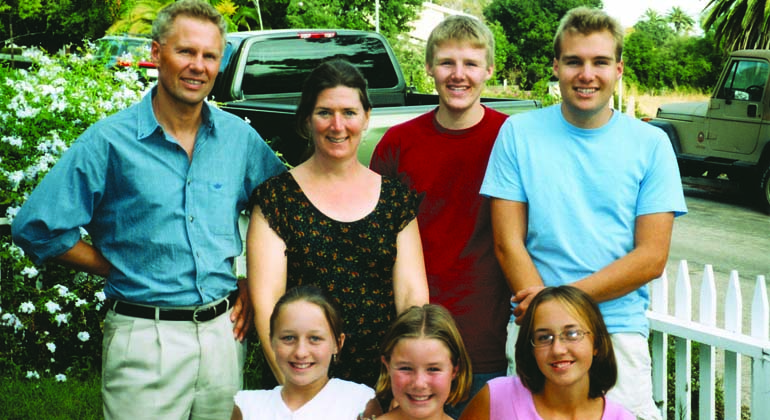Many prospective adoptive parents may be hesitant to look into Fost/Adopt programs in their state, worried about a child’s insurmountable emotional difficulties or birth parents coming back into the picture after the adoptive family has begun to bond. But, as Fost/Adopt parents Kathryn Reiss and Tom Strychacz write, it can be a rewarding way to grow a strong family and give foster children a place to finally call home.
In this six-part series, Kathryn and Tom write about their journey through the Fost/Adopt system, and how daughters Alexandra and Angie eventually became a permanent part of their forever family.
 “In The Beginning”
“In The Beginning”
“Wait — you already HAVE three children!” some of our friends exclaimed, baffled, when they learned we were planning to adopt. Others, more positive, were interested themselves in the idea of adoption. Yet “are you out of your minds?” seemed to be everyone’s thought when they understood the details of our plan. Adopting a baby was one thing, they reasoned. But — adopting an older child from our state’s Fost/Adopt program? Surely such a child would have been damaged by neglect or abuse. And what if our family’s wonderful dynamic were ruined?
Continue reading >
 “A New Family Dynamic”
“A New Family Dynamic”
We came into our new daughters’ lives on a rainy spring morning, under the promise and blessing of a rainbow. Two hours later, we were as close as we would ever get to abandoning the whole project.
Alexandra and Angie were sweet children, who were obviously trying to be as relaxed as possible, considering they were meeting the people who might turn out to be their parents for the rest of their lives. But as they towed us into their bedroom at their foster home, the meeting veered quickly into the unexpected.
Continue reading >
 “Learning How to Settle In”
“Learning How to Settle In”
“When we’re adopted, can we call you Mom and Dad?” Angie asked eagerly, on the first night she slept at our house.
“We hope you will,” we replied, “when you’re ready.” Our two new girls had known us only a few weeks, and we didn’t want them to feel rushed.
“Okay,” said Angie as Kathryn leaned over to tuck her in. “Goodnight — Mom.”
We were touched by how eager Alexandra and Angie were to fit in, how much they wanted Fost/Adopt to work. But how long would it take, we wondered, before they truly settled in to the rhythms of our family’s life?
Continue reading >
 “School Daze”
“School Daze”
On their very first overnight visit to our house, Alexandra and Angie, then 10 and 12, sat at their desk in their new room. We walked in to find Angie competently finishing off her weekend homework — and Alexandra’s!
“But I’m just helping her,” Angie explained when we objected. “She always needs help with schoolwork.”
Since the beginning of our adoption odyssey, we had known that Alexandra had a learning disability, specifically involving language and reading. She had been in special education classes from the start, and she was proud to have passed fourth grade just before coming to live with us. But we soon realized that her birth sisters, well versed in the art of playing the system, were the real reason Alexandra had passed from grade to grade. They had completed all her homework and done every project for her, year after year.
Continue reading >
 “Balancing Act”
“Balancing Act”
Within six months of coming to us, our new daughters both celebrated birthdays. Alexandra turned 11; Angie, 13. “Whoa — a teenager!” Angie teased. “Get ready for my rebellion!”
“No fair,” we objected. Teens have generally logged in long years of growing up with their parents before pulling away. We hadn’t had Angie long enough! “You can’t rebel until we’ve had you for 13 years.”
She laughed. “OK, just wait until I’m 26!”
That sounded fine to us.
Continue reading >
 “Finally — Finalization!”
“Finally — Finalization!”
If we had to choose a watershed event that marked the end of our adoption odyssey, it would be the adoption ceremony at which Alexandra and Angie legally became our children.
It happened in September, more than a year after the girls came to live with us. Our family had already been finalized in our hearts many months before the court date, so it was a symbolic ending, an arbitrary date selected because that’s when the judge was available. It came several months after the last legal hurdles: a final hearing for termination of their birth parents’ rights, extensive reports filed by the social workers, countless forms which we filled out with our children’s new last names. It was the culmination of a long journey that began when Child Protective Services decided that adoption (rather than reunification) was our girls best chance for happy childhoods and productive lives.



